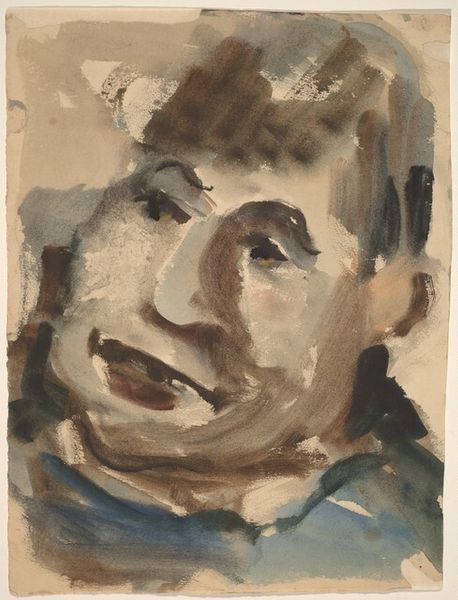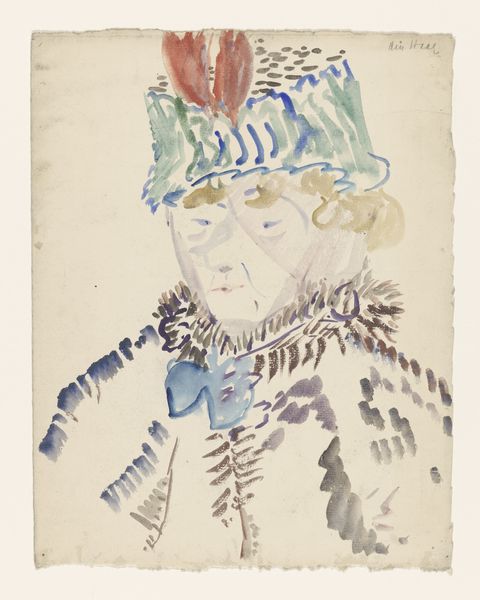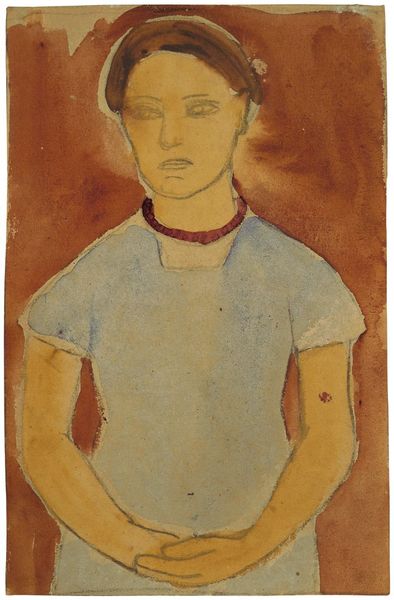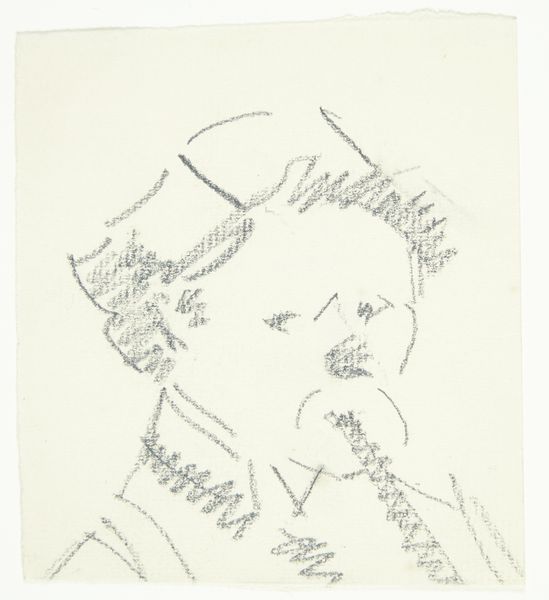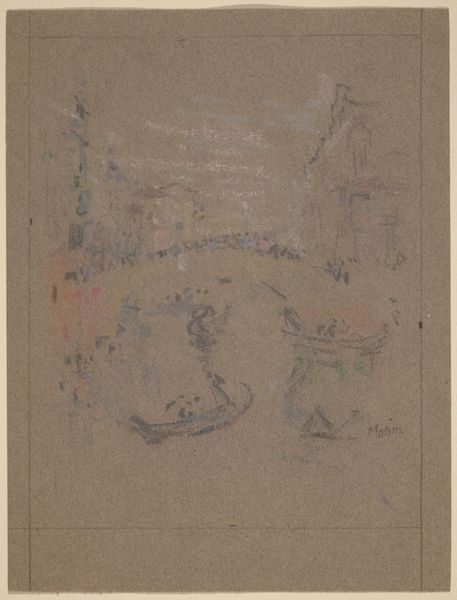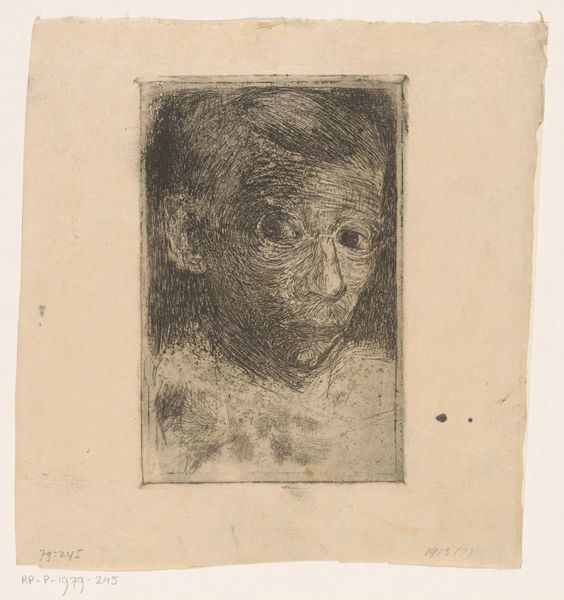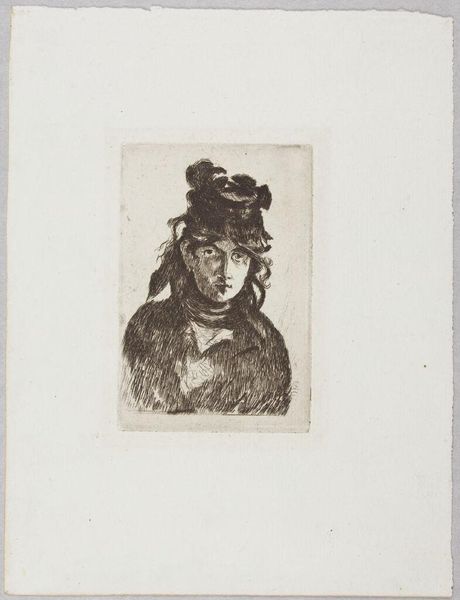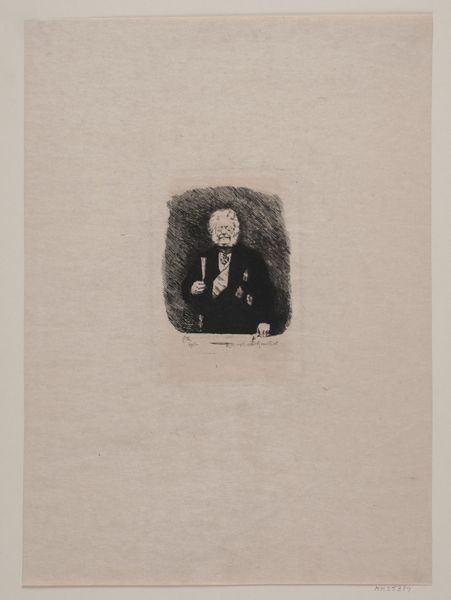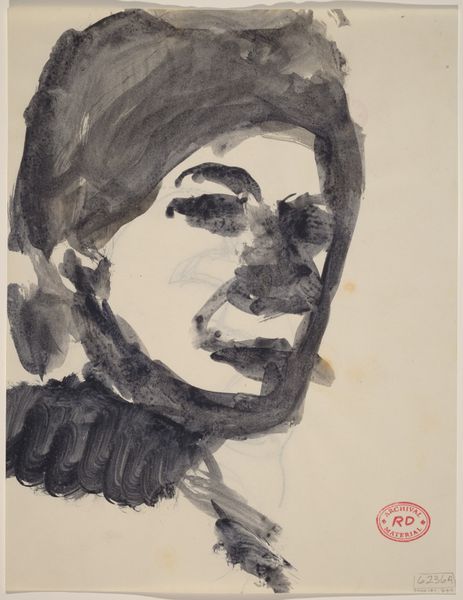
drawing, gouache, watercolor
#
portrait
#
gouache
#
drawing
#
water colours
#
gouache
#
figuration
#
oil painting
#
watercolor
#
underpainting
#
watercolor
Copyright: National Gallery of Art: CC0 1.0
Curator: Well, this rather arresting image is a watercolor and gouache work entitled "Portrait of a Man Wearing a Black Hat." The piece is by Mark Rothko, though its precise date is unknown. Editor: Arresting is right. My first impression is a jumble of unease and slight amusement. The sitter’s expression is unsettlingly jovial, like a distorted reflection in a funhouse mirror. There’s a primitive, almost caricatured quality to the rendering. Curator: And yet, look at how that apparent crudeness complicates our understanding of Rothko. He’s often situated as this austere master of abstraction. Here we see him engaging, even tentatively, with the portrait genre. Editor: The man's hat is like a dark crown. It hints at an elevated social position, sharply contrasting with the wild strokes defining his features. The splash of bright red around his neck… what does that evoke for you? It’s too deliberate to be accidental. Curator: Perhaps a challenge to prevailing ideas about masculine representation at the time. The subject matter might invite the viewer to reflect on assumptions that are attached to societal identity. Editor: I think you’re right. And perhaps that aggressive red also stands in for raw emotion—Rothko using the portrait form to signal some inner turmoil or unarticulated passion of the sitter, not easily discerned on the surface. The wild application, the colours, almost feel like tribal markers to me. Curator: Interesting. Looking at this now, I wonder what other figures interested Rothko. There's a gap, in art historical scholarship, when thinking about which figures from Rothko's milieu were formative influences during the conceptual and ideological phases of his artistic formation. Editor: This image opens avenues for new art historical discussions. The distorted, dream-like quality is compelling. Despite the artist's fame for abstraction, the emotive core translates. I find I am leaving this work with many more questions about how portraiture seeps through other modes of art. Curator: It makes one reconsider what portraiture has meant, what it could come to mean, how abstraction may come to depend on it. Thank you for your reading on it. Editor: Likewise, and thank you for bringing a historian's viewpoint to it, to explore avenues through art that is available to us.
Comments
No comments
Be the first to comment and join the conversation on the ultimate creative platform.
